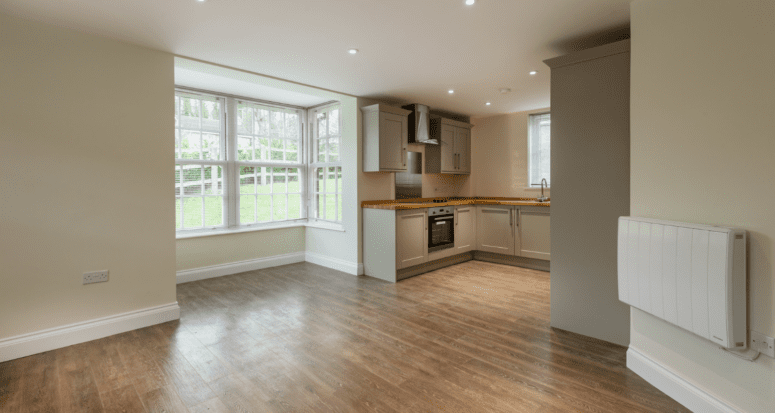6 Tips for Making Real Estate Safety a Priority and Profitable
- Published on
- 7 min read
-
 Lisa Johnson Smith, Producer, The Walkthrough™Close
Lisa Johnson Smith, Producer, The Walkthrough™Close Lisa Johnson Smith Producer, The Walkthrough™
Lisa Johnson Smith Producer, The Walkthrough™Lisa Johnson Smith is a Producer for HomeLight’s podcast called The
Walkthrough™. She is also a Realtor® at Keller Williams, where she specializes in luxury homes in New Jersey. She transitioned to this field in 2004, after a successful long-term career in television as an on-air personality and producer.Johnson Smith has been recognized with numerous awards for her television experience hosting, producing, and reporting for various television stations, including ABC, CNN, BET, HBO, MSG and NBA TV, to name a few. One that she is most proud of is her role as the first Host and Producer for Teen Summit on BET, a national, award-winning talk show for teens.
-
 Matt McGee, Editor, Agent Resource CenterClose
Matt McGee, Editor, Agent Resource CenterClose Matt McGee Editor, Agent Resource Center
Matt McGee Editor, Agent Resource CenterMatt McGee is HomeLight's Agent Resource Center managing editor. He hosts HomeLight's weekly podcast, The Walkthrough, which delivers actionable, no-hype advice from the best real estate agents and top industry experts in the country. He previously served as Editor-In-Chief for three Third Door Media digital publications: Search Engine Land, Marketing Land, and MarTech Today. Matt's a Pepperdine University grad who's been surrounded by real estate his entire life: his wife and sister are active agents, as was his dad for almost 50 years.
We’ve all heard the adage “safety first.” As children, messages promoting safety are ingrained in our minds.
“Never talk to strangers.”
“Never play with fire.”
“Be home before dark.”
While driving, we see constant reminders on the highway to “buckle up for safety.”
And it doesn’t stop there. In the working world, this push for safety is second-nature in many professions. On construction sites, workers are required to exercise caution by wearing hard hats. In factories, everywhere you look there are “Danger Zone” signs posted. In doctor’s offices and laboratories, there are warning signs on “Hazardous Waste” containers.
In other words, in most professions, safety is a priority.
And yet, as real estate agents, where we make a living meeting complete strangers at empty houses, safety is not very often at the top of our priority list. After all, it’s about sales, right?
“According to the U.S. Department of Labor, real estate sales and leasing is considered a high-risk and hazardous occupation. It’s up there with security guards, it’s up there with convenience store clerks, taxi drivers, Uber drivers. It’s a dangerous job,“ says safety expert Tracey Hawkins.
Hawkins’ expertise spans almost 30 years. Since 1995, her company, Safety and Security Source, has offered training workshops that promote proactive safety measures. In 2021, she spoke at the National Association of Realtors national conference. And as a former real estate agent, she knows first-hand what agents should look out for. Hawkins created a Safe Seller Security Checklist that contains 13 safety tips that she hands out in workshops that she urges agents to share with sellers.
In episode 89 of The Walkthrough™, Hawkins makes several critical recommendations that encourage agents to be more proactive about safety. We’ve summed them up for you in six safety tips that will, hopefully, persuade you to consider prioritizing safety. Hawkins also shared a bonus tip on turning safety into profitability.
Safety Tip #1: Trust your gut
If you feel like you’re in danger, follow your instincts. “Every animal in nature has that ability to detect whether or not they’re in danger. The only problem is that we are the only animals who choose to ignore that voice,” says Hawkins. She says we are so concerned with being polite, hurting someone’s feelings, or looking silly later, that we ignore the voice that’s telling us we’re in danger. Get out of there, and apologize later if you need to.
Safety Tip #2: Create witness potential
This is especially important at open houses. Place signs throughout the property, starting from the front door, that say, “Smile, you are on camera.” Hawkins encourages using signs whether there are cameras or not. “We act differently when we know there are cameras present,” she says.
According to the NAR 2021 Member Safety Report, 37% of real estate agents did open houses alone, and 43% have shown vacant properties in locations where there is poor phone service. Hawkins recommends never doing open houses alone, but if you have no choice, she says you should at least give the impression that you’re not going to be alone for long. When you’re welcoming a potential buyer into a house, let them know that you’ve got another agent coming with their clients soon.
In the case of a first-time meeting with a client, Hawkins suggests meeting at your office or even the title company you frequently use to increase the potential that you’ll have witnesses as you meet. If those are not an option, meeting at a coffee shop or restaurant that you frequent, where you’re recognized by the people that work there, serves the same purpose.
If you can’t schedule a meeting in a familiar location, then Hawkins says to try a virtual meeting on Zoom or FaceTime. That way, you can see them and get a sense of who they are. You also now have a photo captured of them.
Safety Tip #3: Get all valuables and potential weapons out of sight
That means removing that butcher block on the kitchen counter and locking up or concealing those Birkin bags and Chanels that are usually on display in your closet. Laptops, jewelry boxes, medicine, and of course, guns should be either removed from the house or locked up in a discreet location. This should be done soon after you list a house on the market. Be sure to do a recheck before each open house.
Safety Tip #4: Google the person before meeting them face-to-face
You should know who you’re meeting. Hawkins advises that you check a client’s social media and websites to gather information, and to even go a step further by utilizing an affordable app like Forewarn. This company says that with their technology, a simple name search will positively identify over 80% of people and provide invaluable information about that person’s background.
Safety Tip #5: Once you get to the property, be sure to check in with someone
Every agent should have a safety partner. Letting someone else know where you are is paramount. Hawkins suggests using Google Maps to send your location information to that person as soon as you arrive at your destination, and inform the client that you are doing so.
Safety Tip #6: Know where your exits are located
Before showing a house, make sure you know where all of the exits are, both in the house and in the neighborhood, in case you have to get out quickly. In addition to this, while showing a house, always let the client go into every room first and lead the way. This allows you to have more control of a situation if you need to get out of a room.
Bonus Tip: Turn safety into profitability
Hawkins teaches that leading with safety is a tool that can be used to grow your business and translate into dollars. She suggests adding the topic of safety to listing presentations and using the Safe Seller Security Checklist as a tool when speaking to FSBOs. She believes safety-trained agents can stand out from other agents and get more listings by letting homeowners know that safety is a top priority, in addition to marketing a seller’s property.
“The agent who is safety-trained is walking in with the security checklist and they’re saying, ‘Here’s what we need to do to make sure you are safe, your family is safe, and your possessions are safe and secure while your house is on the market,’” says Hawkins. She says that when agents attach their business card to the safety tip pamphlet, “their business card will rise to the top of the stack when that FSBO sees these 13 safety tips that they never thought about.”
Unfortunately, safety training isn’t mandatory in most markets. However, Hawkins strongly believes that if broker/managers create a safety culture, more agents will decide to become safety-trained.
“Safety isn’t sexy,” says Hawkins. Or relevant, that is, until something bad happens.
Just this past January, REALTOR® Magazine ran a story, originally reported by WCBI.com, about a 44-year-old man that had been arrested for allegedly threatening to ambush and sexually assault real estate agents in several counties across Mississippi. The man also claims to have already carried out his threats four times.
Whether agents feel unsafe or not is not the issue. The fact is, everyone is at risk, and anyone can be a target, no matter where or what time of day a home is being shown. Make a decision to be proactive by placing safety as a top priority in your business, and take those necessary precautions to stay safe and protect yourself and your clients.
Header Image Source: (Mike Higginson / Shutterstock)

